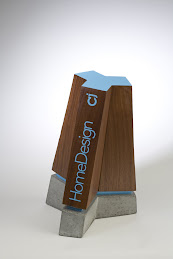In the previous post I mentioned adding a super absorbent polymer (SAP) to the mixture to improve curing and eliminate having to put plastic on the fresh concrete. I have been using SAPs for a number of years in traditional concrete and have been very happy with the results in countertops.
A little background:
Concrete gets hard through a chemical reaction called hydration. Various cement components dissolve and recombine to make concrete hard. The ultimate strength and durability is related to the cement chemistry and amount of water in the system. Lower the water-to-cement (w/c) ratio the stronger the mixture. Unfortunately the hydration products occupy a smaller volume in their hardened state than in the fresh state, so concrete shrinks. At w/c less than 0.42 this shrinkage can be significant enough to crack the concrete from within. Also at low w/c the permeability of the hydrating paste is so low that water can't get in. If you break a low w/c mixture that has been stored in water, the middle will be dry and hydration has stopped. Hey, wouldn't it be nice if we could include some extra water in the mix that the cement can use during the hydration process? Yes and in comes SAPs.
SAPs basically soak up a bunch of water, expand, and give the water back one time. They aren't like sponges and only have a single use. Since we put more water in the mix than is needed for complete cement hydration, adding a SAP to soak up the extra water will help in the long run. The other thing needed for a good SAP is a small particle size for good distribution. Baby diapers are SAPs but the polymer grains are very large and would leave big bubbles if used in concrete. The particle size of the SAP I use is designed to work well within concrete.
The version of SAP I use is called Hydromax. You can buy a 4 lb canister for about $80 which is sized for 8 cubic yards of concrete. That one container is enough for 40 or so normal sized kitchens. The dosage rate is 2 oz per 100 lbs of cementitious material in your mixture. Just throw the SAP in with the mix and proceed as normal. It will not produce any noticeable changes in the mixture. Overall these mixtures gain strength faster, have better overall strength, and less shrinkage.
One thing to note, SAPs are very fun to play with. If your kids or drunk neighbors get ahold of them you may run out from all the experiments.
Subscribe to:
Post Comments (Atom)





John, it appears you're in my part of town. Your work and your blog are fantastic! Would you ever consider letting me watch you work sometime? I'm starting to do little projects for me and my family.
ReplyDeleteSure Brandon, just email me kevernj@hotmail.com. Things are wrapped up for the year and I will have to let you know when the next project moves forward.
ReplyDeleteGreat John! I went ahead and sent you an email. Look forward to hearing from you.
DeleteAll I can say on this blog is thank you for letting me know this kind of information so valuable so better to keep on posting.-hardwood countertops Vancouver-
ReplyDeleteThe concrete planter is the one catch my interest. Very unique and elegant look either the others is so much fantastic. Great work.
ReplyDeleteConcrete Flooring Solutions